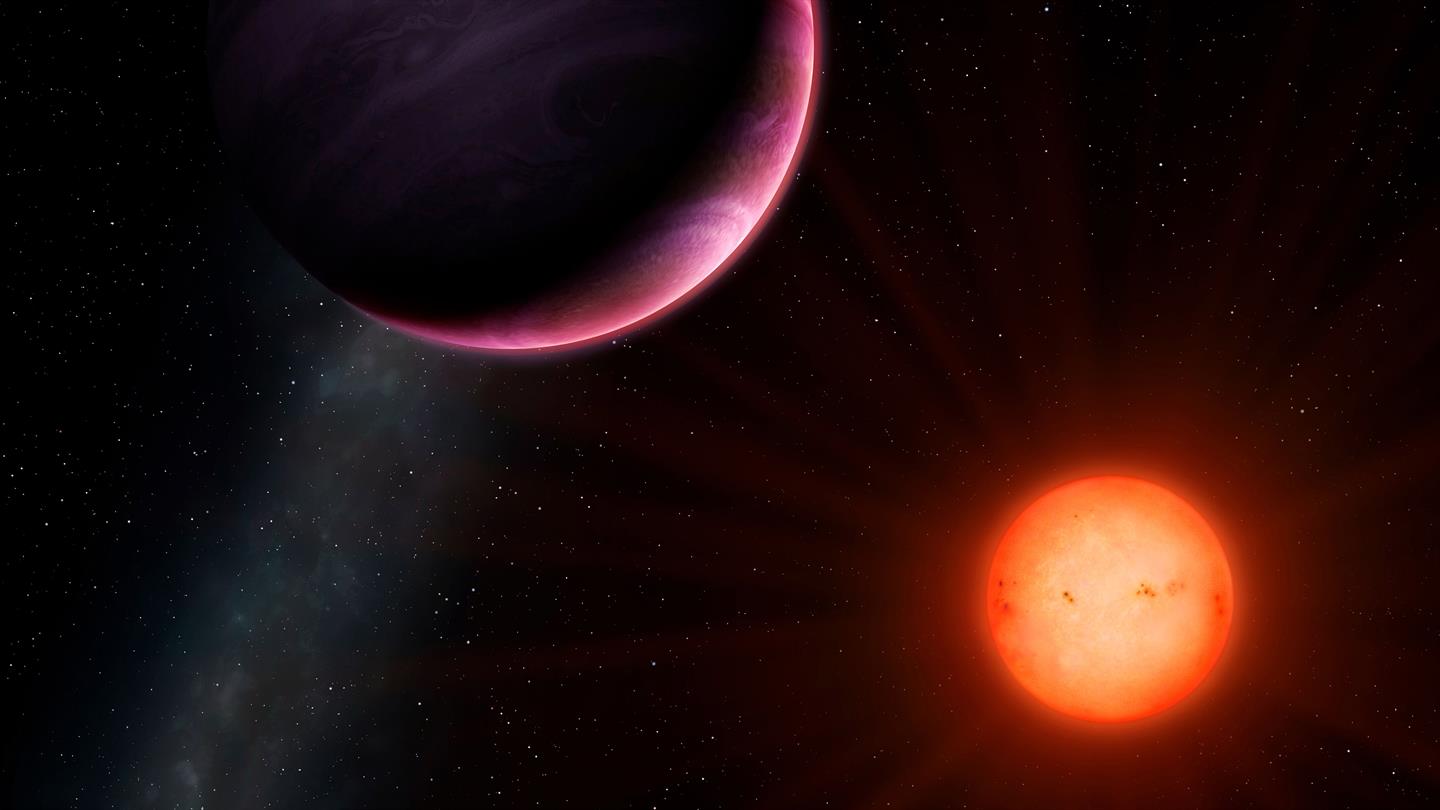
Challenging the theory of formation of worlds, a monster planet found orbiting a dwarf star
A supposedly massive planet which shouldn’t exist at all according to known theory has been found by the scientists orbiting a relatively faint dwarf star which is a reason for a surprise as it negates everything that we know about the formation of worlds. A giant planet orbiting around a star so small has posed a challenge to all the theories that exist. The planet is said to be as big as the Jupiter but is efficiently orbiting a star that is way too small. As observed by the scientists, the star has a radius, half of our Sun and same with the mass.
As explained by Britain’s Royal Astronomical Society, the theory as we know it states that stars this small can form mini rocky planets but do not possess the capability to attract enough material together to compile a planet so big. The basic theory behind the formation of planets is when gas and dust from a gigantic galactic explosion bind together while swirling around newborn stars is what leads to their formation. The Next-Generation Transit Survey (NGTS), a unit based in Chile’s Atacama Desert is credited with the discovery of this planet.
The planet has been named by the scientists from the same unit as NGTS-1b, and the star has been named as NGTS-1. The ‘b’ in the planet’s name signifies that it is the first planet found to have orbiting this particular star.
To study a star and its planets, the scientists use a range of 12 different telescopes to look through the sky into the stars that emit a dip in the light emitted now and then. This regular and timed dip in light means that a planet is moving in front of the star as seen from Earth.
According to Daniel Bayliss, lead author of the study from the University of Warwick, the discovery of NGTS-1b came as a total surprise to our team as planets this massive has never existed in the orbit of such small stars. The study of findings has been published in the science journal Monthly Notices of the Royal Astronomical Society.
The NGTS-1b is about 25percent bigger in radius that its star which makes it significantly large. Upon comparison, our Jupiter is just 10 percent of the total radius of our sun. After finding the planet, the next thing the astronomers looked for is the gravitational impact of the planet on the star to determine the accurate size, position, and mass of the same.
The planet is said to be located close to its star which is around three percent of the total distance between our Sun and earth. One complete orbit for the NGTS-1b is 2.6 days. This means a full year on this planet is just 2.6 days on this planet.
Even if the planet was so big, it was difficult to find it as the parent star is real dim making it difficult to locate. The scientists predict there might be many such giant planets in the orbit of the said star.


